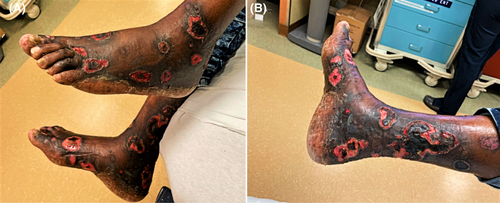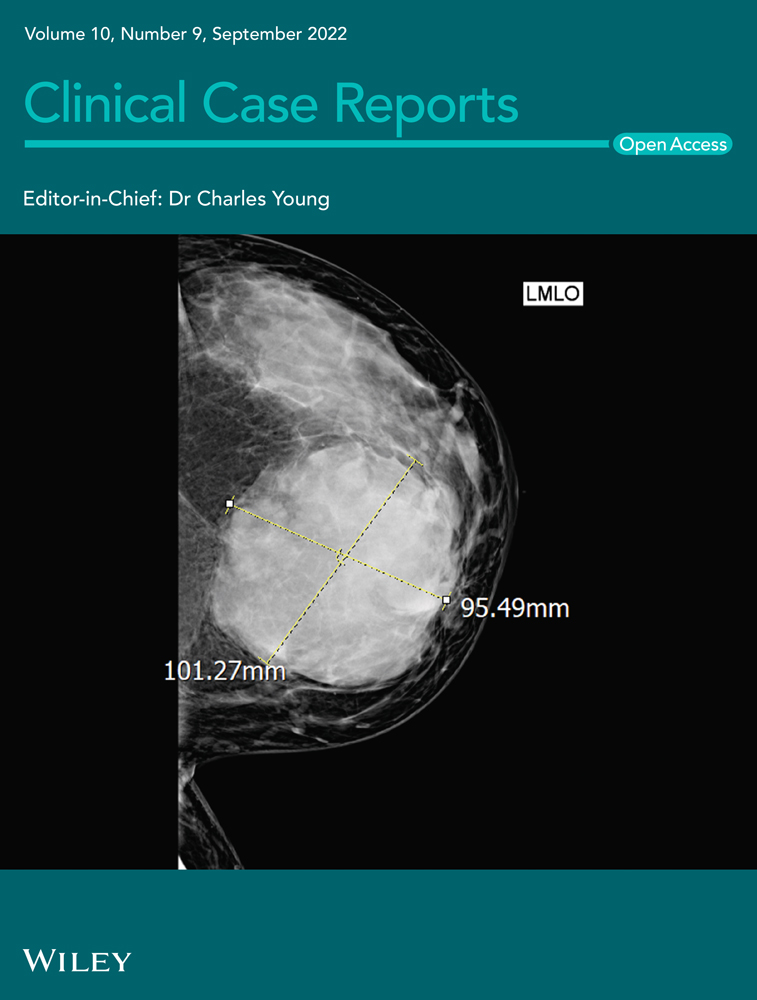Ulcer in a dialysis patient: Calciphylaxis or something simpler
Funding information
No funding was received for this case report
Abstract
Ulcers in dialysis patients have multiple etiologies; uremic pruritis is common in dialysis patients and is associated with poor outcomes; however, it is more likely to be underdiagnosed as we usually think about more serious etiologies as calciphylaxis. Here, we present a case where uremic pruritis was the leading diagnosis.
We present a 56-year-old man with a past medical history of end-stage renal disease on regular hemodialysis, streptococcal endocarditis 4 years ago, COVID-19 pneumonia 3 months ago presented to the ED with a complaint of wounds in both legs, as shown in Figure 1.

He reported severe itching for 2 months, and the ulcers started 3 weeks before presentation. The ulcers were initially painful, later painless, initially on the right foot, later on, both right and left foot, and the lower legs on both sides. He denied IV drug abuse, and his drug screen had been negative. His physical examination had been normal other than the leg ulcers, with no systemic signs of infection and no fevers.
Infective endocarditis had been ruled out with negative blood cultures and a negative transthoracic echocardiogram. A full autoimmune workup was negative.
Given that the clinical picture was unclear, multiple skin biopsies were performed, showing no evidence of vasculitis, infectious process, or calciphylaxis. The epidermis adjacent to the ulcer is reactive/hyperplastic, and the changes were suggested to be secondary to CKD-associated pruritus. The patient received Triamcinolone cream with antihistaminic and local wound care, and the ulcers improved, as shown in Figure 2 in the supplementary section.

The key clinical message is that in patients with end-stage renal disease presenting with lower extremity ulcers, the differential diagnoses include vasculitis, infectious process, and calciphylaxis. Nevertheless, simple causes, such as uremic pruritus,1 should also be remembered.
ACKNOWLEDGEMENT
Acknowledgment for medical team at Rochester general hospital.
CONFLICT OF INTEREST
None.
AUTHOR CONTRIBUTIONS
Both authors contributed to the data collection and case presentation.
ETHICAL APPROVAL
Our institution does not require ethical approval for reporting individual cases or case series. The patient received standard of care treatment and was not subject to any experimentation.
CONSENT
Patient written permission had been obtained to publish his images. The approval had been documented in his electronic medical record.
Open Research
DATA AVAILABILITY STATEMENT
The data that support the findings of this study are available from the corresponding author upon reasonable request.




